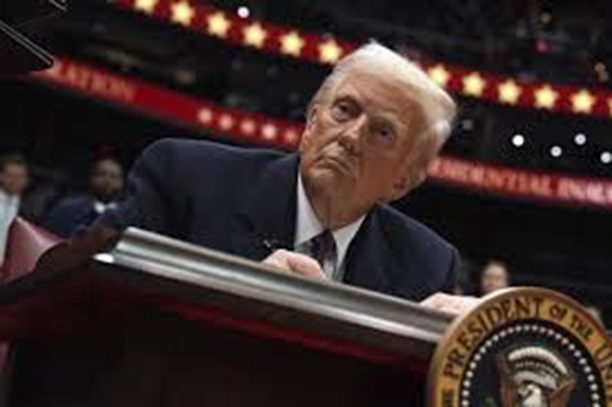
- AP Photo
Everything President Trump Did in the First Executive Orders and Actions of His Presidency
By Bill Barrow
President Donald Trump started his second administration with a blitz of policy actions to reorient the US government.
His executive orders cover issues that range from trade, immigration, and US foreign aid to demographic diversity, civil rights, and the hiring of federal workers. Some have an immediate policy impact. Others are more symbolic. And some already are being challenged by federal lawsuits.
In total, the Republican president’s sweeping actions reflect many of his campaign promises and determination to concentrate executive branch power in the West Wing, while moving the country sharply rightward.
Here is a comprehensive look at President Trump’s directives so far in his first three days:
Immigration and US borders
• Designate an “invasion across the southern border of the United States,” a move that triggers certain executive branch powers so, Trump says, his Cabinet “shall take appropriate action to repel, repatriate or remove any alien engaged in the invasion.”
• Allow US military service members to act as immigration and border enforcement officers as part of President Trump’s promised mass deportation program . Trump’s order covers the Ready Reserve and National Guard, military property that could be used as detention space, ground and air transport vehicles, and “other logistics services in support of civilian-controlled law enforcement operations.” The Posse Comitatus Act of 1878 has historically limited the use of military personnel in domestic law enforcement actions. Trump’s orders frame migrant flow as a national security threat, which he reasons justifies his military orders as commander in chief.
• Stop refugee arrivals and suspend the US Refugee Admission Program effective Jan 27, 2025, pending a 90-day review and recommendations from Homeland Security, the State Department, and others.
• Redefine birthright citizenship under the 14th Amendment. A Trump order asserts that a child born in the US is not a citizen if 1) the mother does not have legal immigration status or is in the country legally but only temporarily and 2) the father is not a US citizen or lawful permanent resident. The order forbids US agencies from issuing any document recognizing such a child as a citizen or accept any state document recognizing citizenship. This order is already being challenged in federal court.
• Prioritize continued construction of a wall and “other barriers” along the US-Mexico border.
• Direct the attorney general and Homeland Security secretary to create Homeland Security Task Forces in all 50 states, comprising state and local law enforcement charged with “ending the presence of criminal cartels, foreign gangs, and transnational criminal organizations.”
• Give the Homeland Security secretary wide latitude to establish agreements with individual state and local law enforcement agencies, “to the maximum extent permitted by law,” that empower those non-federal officials to act as federal immigration officers.
• Require collection of DNA samples and fingerprints from immigration detainees under a 2005 federal law.
• Forbid so-called “catch-and-release” – which allows some migrants to remain in the US while awaiting their immigration court proceedings – in favor of detention and deportation of anyone in the US illegally.
• Direct Homeland Security to immediately devote resources and secure contractors “to construct, operate, control, or use facilities to detain removable aliens.”
• End so-called “parole programs” (often referred to as “family reunification”) that allow family members of certain citizens and permanent-resident immigrants from Cuba, Haiti, Nicaragua and Venezuela to come to the US while their visa applications are still pending.
• Require a review of all cases for all immigrants now in the US under “Temporary Protected Status,” with the stated intent of “ensuring ... that such designations are appropriately limited in scope” and last the minimum amount of time “necessary to fulfill the textual requirement” of federal law.
• Revert to vetting and screening standards used during Trump’s first term for any person seeking a visa or “immigration benefit of any kind” and apply the standard visa vetting procedures to “any refugee or stateless individual” seeking admission.
• Repeal a Biden order requiring planning for the effects of climate change on world migration patterns.
• Direct the secretary of state and US diplomats effectively to threaten sanctions against any nation seen as reluctant to accept and facilitate the return of its citizens the US deports.
• Direct the State Department, Homeland Security and others to review and recommend changes to vetting for visas and produce a report to the president within 60 days. The order calls for identifying countries “for which vetting and screening information is so deficient as to warrant a partial or full suspension” of admission to the US for their citizens.
• Direct the attorney general and others to deny federal money to “so-called ‘sanctuary’” cities the administration sees as interfering with federal immigration enforcement, with the caveat that the Trump administration pursues action “to the maximum extent possible under the law.”
• Pause distribution of federal money to non-governmental organizations “supporting or providing services, either directly or indirectly, to removable or illegal aliens” pending reviews and audits to identify any operations that may “promote or facilitate violations of our immigration laws.”
• Designate international cartels as “Foreign Terrorist Organizations” or “Specially Designated Global Terrorists” under existing federal law. The order triggers the Alien Enemies Act to combat cartels and their members.
• Require, within 30 days, the attorney general, secretary of state and others to “evaluate the adequacy of programs designed to ensure the proper assimilation of lawful immigrants into the United States, and recommend any additional measures ... that promote a unified American identity.” - AP

